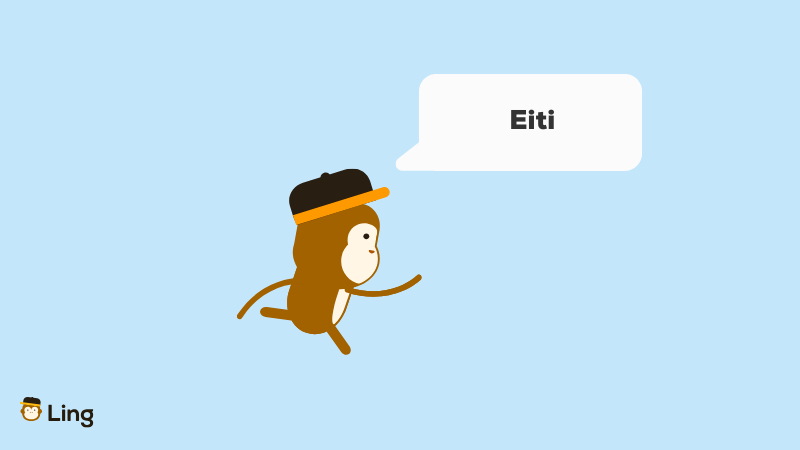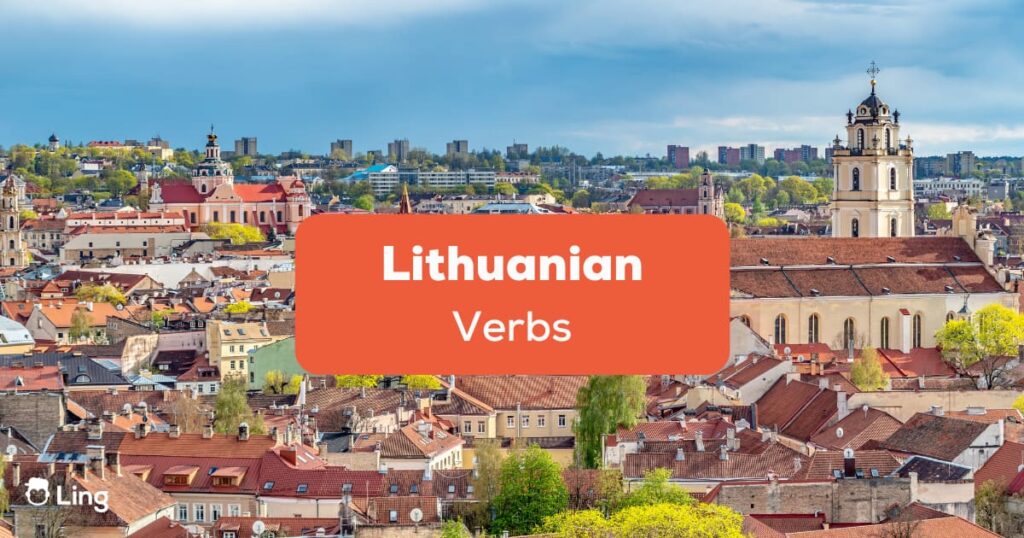Are you eager to learn Lithuanian and want to know the basics of this language? Take your first step into this beautiful language and learn the most common Lithuanian verbs and how to conjugate them in this post!
Learning a few verbs in a new language is one of the first steps one must take to construct a sentence. You can’t go on and around a new country just using nouns and adjectives, after all! If you keep going to the same coffee house, just asking for koavos (coffee) the same way every day, the barista will eventually think that you are crazy! Instead, you should learn to say Ar galiu išgerti kavos, prašau? (Can I have a coffee, please?). It definitely will make a much better impression and probably will make you grab a smile from the cute barista.
Going through your Lithuanian learning journey, getting to the verb department is challenging. Lithuanian is already a pretty hard language to learn for English Speakers, as it is one of the Indo- European languages that has not been simplified yet! If you feel this may be a bigger step than you can manage, you can always explore other topics about Lithuanian, such as how to ask how are you and how to say congratulations.

What Are Useful Lithuanian Verbs?
Let’s first see how the most common and frequent verbs in Lithuanian are written and spoken, and then we’ll head up to learning how to say them in different persons.
- būti – to be
- eiti – to walk
- ateiti – to come (by foot)
- išeiti – to go [away] (by foot)
- važiuoti – to drive
- atvažiuoti – to come (by vehicle)
- išvažiuoti – to go [away] (by vehicle)
- skristi – to fly
- nešti – to carry
- atnešti – to bring
- galėti – to be able
- pažinti – to know (a person)
- žinoti – to know (a fact)
- turėti – to have
- norėti – to want
- valgyti – to eat
- gerti – to drink
- miegoti – to sleep
- žiurėti – to watch / to look
- matyti – to see
- klausytis – to listen
- girdėti – to hear
- sakyti – to say
- pasakyti – to tell
- mėgti – to like
Want to use these verbs in a sentence? Check out the Ling app. The Ling app has a chatbot where you can put everything you learned here into practice, chatting in the Lithuanian language and practicing your skills in structuring meaningful sentences. So what are you waiting for? Download the Ling app on your iOS or Android phone and start learning Lithuanian today!

How Do You Do Lithuanian Verb Conjugations?
There is much more to explore with Lithuanian verbs that I could write for hours to explain the basics. Thus, I’m going to focus on showing you the conjugations of verbs in the present tense, just for you to be able to survive on your next trip to Lithuania.
In order to explain to you in a simple way, there are basically three big families of Lithuanian verbs: ending in –ėti, ending in –yti, and the remaining others. According to both the person of the conjugation and singular or plural form, there are different conjugations you can make of the verb. These combinations are in the table below.
| Ending form | aš (me) | tu (you, singular) | jis, ji (he, she) | mes (we) | jūs, ju (you, plural) | jie, jos (They) |
| -ėti | -iu | -i | -i | -ime | -ite | -i |
| -yti | -au | -ai | -o | -ome | -ote | -o |
| all others | -u | -i | -a | -ame | -ate | -a |
Let’s put this into practice, shall we? Let’s use, for example, the Lithuanian verb valgyti (to eat). If you wanted to say “I eat,” then the translation would be aš valgau where aš would mean “I,” and the verb eat in this case, would have the termination -au. The same Lithuanian verb in the 1st person of the plural would be mes valgome (we eat).
Jie valgo kartu kiekvieną sekmadienį. (They eat together every Sunday.)
On the other hand, the Lithuanian verb turėti (to have) in the phrase “I have” would be Aš turiu, just as indicated in the table. The same verb in the third person of the plural would be jie turi (They have).
Mes turime tą patį automobilį (We have the same car)
Where Will You Use Lithuanian Verbs?
And there we have it! As we reach this part of the article, we hope that you have mastered at least the basics of the Lithuanian rules in the usage of verbs. Despite being said that the Lithuanian language is hard, as you can see, verb conjugation in this language proves to be very straightforward! Once you know the infinite version of the verb, the next step is for you to get the correct conjugation of the verb correctly.
Want to dive deeper into this topic? Master the intricacies of this language using my most recommended app below!
Learn Lithuanian With Ling App!
Whether you like it or not, you have all the tools to form and structure a sentence in Lithuanian. However, you may think, “But where do I learn more about this language, like Lithuanian pronouns, nouns, and other important grammatical features for my next trip to Lithuania?” This is where my good friend Ling comes into action.
My friend Ling is a little monkey who is the face of an incredible language-learning app. With the Ling app, you learn several topics in Lithuanian, including music, culture, sports vocabulary, and easy daily-life words! It comes complete with lessons, games, quizzes, and puzzles.
Learning a new language has never been so easy and fun! But wait, I have even more great news! This app is even more interesting because it fits perfectly on your smartphone and is available anywhere and anytime. Don’t wait for tomorrow; download the Ling app now!




































































One Response
I’ll try it. Lithuanian is an almost impossible language to earn. Only about 5 million people in the world speak iLithuanian.